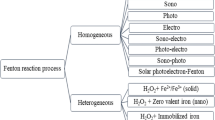Abstract
Electrochemical tests were developed to investigate the electrochemical dissolution behavior of gold and its main coexistent sulfide minerals in acid thiocyanate solutions. The optimal leaching conditions for gold in acidic thiocyanate system were pH 2, 0.15 mol·L−1 thiocyanate and 0.2 g·L−1 Fe3+. Fe3+ addition to the acidic thiocyanate system promoted gold dissolution significantly, arsenopyrite dissolution was inhibited, chalcopyrite dissolution was increased, and the dissolution behavior of other associated minerals remained mostly unchanged. Thiocyanate made gold and associated mineral leaching easier. The galvanic corrosion effect of gold and its main coexistent sulfide minerals in an acidic thiocyanate-free system was that the chalcocite, arsenopyrite and pyrite acted as a cathode to reduce anodic gold dissolution; galena as an anode undergoes oxidation to inhibit anodic gold dissolution. There was almost no galvanic corrosion behavior between stibnite, yellow sphalerite and black sphalerite and gold. Thiocyanate addition changed the galvanic corrosion behavior of stibnite and yellow sphalerite in the thiocyanate system, which inhibited anodic gold dissolution. In the acidic thiocyanate system in the presence of ferric iron, the arsenopyrite promoted anodic gold dissolution, the chalcocite and gold were mostly free of galvanic corrosion, and the remaining minerals inhibited anodic gold dissolution.








Similar content being viewed by others
References
Jia YJ, Wang XH, Cheng W, Ma SH. Research progress on non-cyanide leaching of refractory gold ores. Chin J Eng. 2019;41(5):307.
Cui CL, Zhao LC, Zhang JR, Zhao LB. Research status of sulfur-containing reagent gold leaching technology. China Min Mag. 2018;27(12):112.
Meng Q. Development status and application prospect of non-cyanide gold leaching technology. Yunnan Chem Technol. 2018;45(6):19.
Chen JX, Pang XT. Fe(III)-SCN~system theoretical study on kinetics of immersion gold. Hydro China. 1997;3:16.
Song MW, Liu J, Yu HP. Technical study on gold extraction by ammonium thiocyanate. Min Metal Eng. 2013;33(2):84.
Wu H, Huang WF, Qiu F, Hu XF. Review of gold leaching by thiocyanate. Pre Met. 2016;37(3):72.
Ma CJ, Li JY, Liu RJ. A review of thiocyanate hydrometallurgy for the recovery of gold. Appl Mech Mat. 2015;768:53.
Hu YQ. Thiocyanate oxidative pressure leaching gold from refractory sulfide gold ores with ammoniacal ammonium thiocyanate solution. Changsha: Central South University; 2012. 52.
Hu YQ, Yang SH, Chen YM. Exploration test on gold extraction from arsenopyrite gold concentrate with oxidation pressure leaching process in ammonium thiocyanate-ammonia system. Nonfer Met Extra Metal. 2012;9:34.
Guo H, Yang SH, Chen YM, Yao WY. Oxidative pressure leaching of gold from refractory gold sulfide concentrates with alkaline thiocyanate solution. Nonfer. Met Extra Metal. 2011;10:23.
Wang ZK, Guo X, Ye CL. Gold recovery from waste printed circuitboards inthiocyanate-hydrogenperoxide systems. Nonfer Met Extra Metal. 2015;(1):57.
Liang CJ, Ma CJ. Gold leaching from waste circuit boards with thiocyanatein neutral environment. Pre Met. 2015;36(4):56.
Ji SH. Studying on leaching gold with non-cyanide reagents and process kinetics from smelting industrial residue. Chengdu: Chengdu University of Technol; 2009. 8.
Broadhurst JL, Perez JGH. A thermodynamic study of the dissolution of gold in an acidic aqueous thiocyanate medium using iron (III) sulphate as an oxidant. Hydro. 1993;32(3):317.
Wang ZK, Chen DH. Thermodynamic criterion for oxidant selection in thiocyanate gold leaching. Nonfer Met Eng. 2006;58(4):26.
Li JS, Safarzadeh MS, Moats MS, Miller JD, LeVier KM, Dietrich M, Wan RY. Thiocyanate hydrometallurgy for the recovery of gold. Part I: chemical and thermodynamic considerations. Hydro. 2012;113:1.
Li JS, Safarzadeh MS, Moats MS, Miller JD, LeVier KM, Dietrich M, Wan RY. Thiocyanate hydrometallurgy for the recovery of gold. Part II: the leaching kinetics. Hydro. 2012;113:1.
Li WJ, Liu S, Song YS, Wen JK, Zhou GY, Chen Y. Comprehensive recovery of gold and base-metal sulfide minerals from a low-grade refractory ore. Int J Miner Metal Mater. 2016;23(12):1377.
Safarzadeh MS, Li JS, Moats MS, Miller JD. The stability of selected sulfide minerals in sulfuric acid and acidic thiocyanate solutions. Electro Acta. 2012;78:133.
Aghamirian MM, Yen WT. Mechanisms of galvanic interactions between gold and sulfide minerals in cyanide solution. Miner Eng. 2015;18(4):393.
Zheng S, Wang YY, Chai LY. Mechanism of gold dissolution selectively in alkaline thiourea solutions based on complex theory. Chin J Nonferrous Met. 2005;15(10):1629.
Zhang W, Bas AD, Ghail E, Choi Y. Passive behavior of gold in sulfuric acid medium. Trans Nonferr Metal Soc. 2015;25(6):2037.
Sun XJ. Studies on bioleaching and the electrochemical behavior of pyrite. Changsha: Central South University; 2010. 20.
Zheng S. Fundamentals of green process of gold leaching in alkaline thiourea solution with high stability. Changsha: Central South University; 2006. 106.
Hu YH, Guo GF, Qiu GZ, Wang DZ. Electrochemical study of thiourea gold leaching mechanism. Gold Sci techno. 1995;3(2):43.
Li SY, Wang HX, Sun CB, Zhao LC, Yan ZQ. Effects of different iodides on gold concentrates leaching process in iodine–iodide solution. Chin J Nonferrous Met. 2013;23(5):1434.
Tao SH, Di YZ, Peng JP, Liu KJ, Li YL, Feng NX. Cathodic electrochemical behavior in Na3AlF6–Al2O3–LiF based melts at tungsten electrode with various cryolite ratios. Rare Met. 2018;36(1):40.
Meng Q, Cui YQ, Tong X, Wang K, Yan YM. Research status of gold recovery from thiosulfate leaching solution. Ming Metall. 2013;22(4):51.
Ma YF, Yang ML, Fang LY, Li DY. Electroanalytical chemistry of bismuth-based electrodes: composition, substrates and fabrication. Chin J Rare Met. 2018;43(4):428.
Li J, Liu WW, Zhou HM, Liu ZZ, Chen BR, Sun WJ. Anode material NbO for Li-ion battery and its electrochemical properties. Rare Met. 2018;36(2):118.
Acknowledgements
This study was financially supported by the National Key Research and Development Project (No. 2018YFC1900301), the National Natural Science Foundation of China (No. 51504031) and the Innovation Fund of the General Research Institute for Nonferrous Metals (No. 53319,533801).
Author information
Authors and Affiliations
Corresponding authors
Rights and permissions
About this article
Cite this article
Le, G., Li, WJ., Song, K. et al. Electrochemical dissolution behavior of gold and its main coexistent sulfide minerals in acid thiocyanate solutions. Rare Met. 41, 254–261 (2022). https://doi.org/10.1007/s12598-020-01614-y
Received:
Revised:
Accepted:
Published:
Issue Date:
DOI: https://doi.org/10.1007/s12598-020-01614-y




